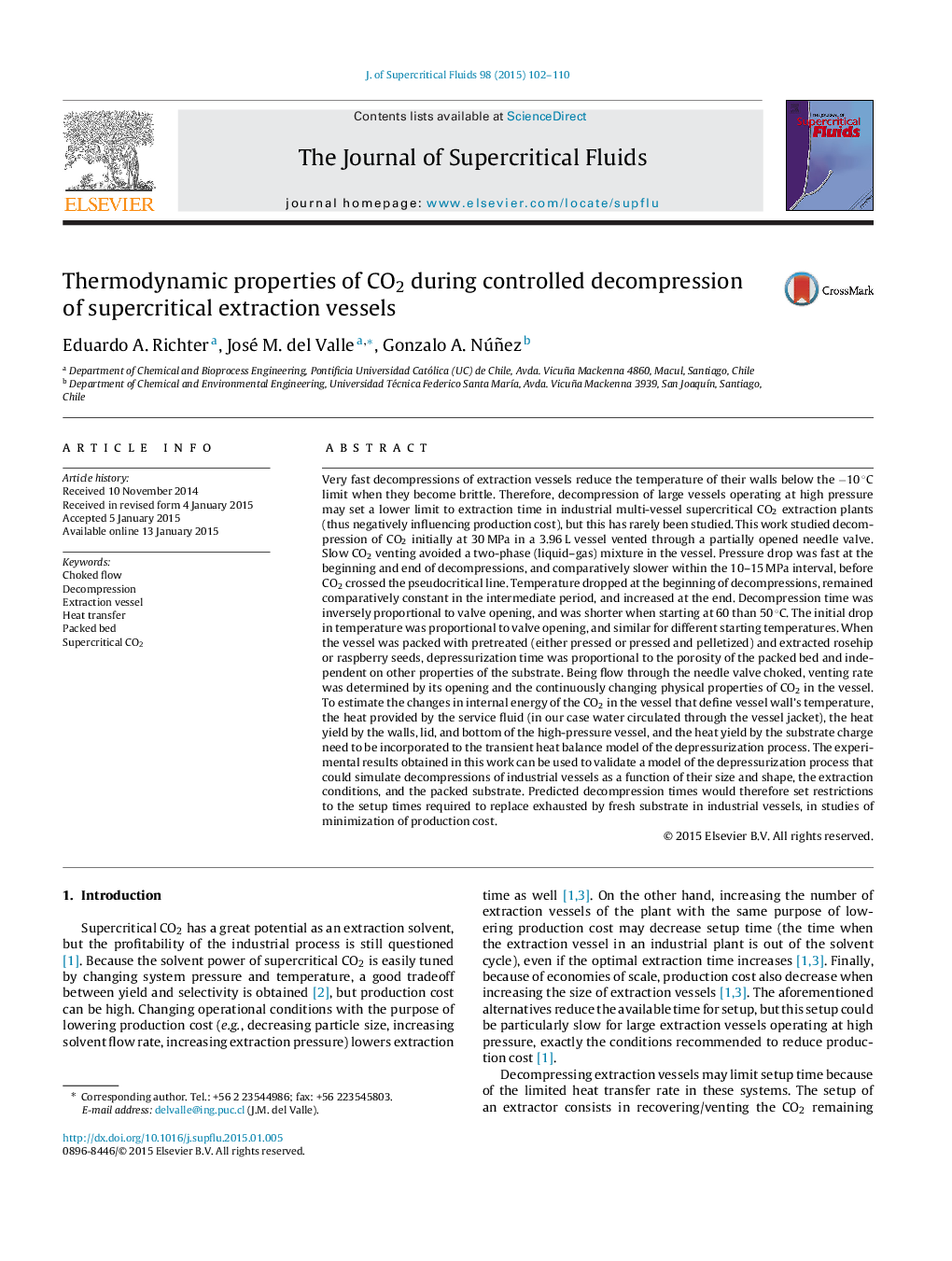| کد مقاله | کد نشریه | سال انتشار | مقاله انگلیسی | نسخه تمام متن |
|---|---|---|---|---|
| 230318 | 1427379 | 2015 | 9 صفحه PDF | دانلود رایگان |

• Decompressions at constant valve opening follow near-adiabatic, transition, and post-pseudocritical stages.
• Vented flow during decompression is a choked-type flow in the valve's seat.
• Substrate leaves less space for CO2 in the vessel, decreasing decompression time.
• Substrate stores heat, but reduces convective heat transfer within the vessel.
• Initial heat convection in depressurizations is 10× higher than natural convection in common fluids.
Very fast decompressions of extraction vessels reduce the temperature of their walls below the −10 °C limit when they become brittle. Therefore, decompression of large vessels operating at high pressure may set a lower limit to extraction time in industrial multi-vessel supercritical CO2 extraction plants (thus negatively influencing production cost), but this has rarely been studied. This work studied decompression of CO2 initially at 30 MPa in a 3.96 L vessel vented through a partially opened needle valve. Slow CO2 venting avoided a two-phase (liquid–gas) mixture in the vessel. Pressure drop was fast at the beginning and end of decompressions, and comparatively slower within the 10–15 MPa interval, before CO2 crossed the pseudocritical line. Temperature dropped at the beginning of decompressions, remained comparatively constant in the intermediate period, and increased at the end. Decompression time was inversely proportional to valve opening, and was shorter when starting at 60 than 50 °C. The initial drop in temperature was proportional to valve opening, and similar for different starting temperatures. When the vessel was packed with pretreated (either pressed or pressed and pelletized) and extracted rosehip or raspberry seeds, depressurization time was proportional to the porosity of the packed bed and independent on other properties of the substrate. Being flow through the needle valve choked, venting rate was determined by its opening and the continuously changing physical properties of CO2 in the vessel. To estimate the changes in internal energy of the CO2 in the vessel that define vessel wall's temperature, the heat provided by the service fluid (in our case water circulated through the vessel jacket), the heat yield by the walls, lid, and bottom of the high-pressure vessel, and the heat yield by the substrate charge need to be incorporated to the transient heat balance model of the depressurization process. The experimental results obtained in this work can be used to validate a model of the depressurization process that could simulate decompressions of industrial vessels as a function of their size and shape, the extraction conditions, and the packed substrate. Predicted decompression times would therefore set restrictions to the setup times required to replace exhausted by fresh substrate in industrial vessels, in studies of minimization of production cost.
Figure optionsDownload as PowerPoint slide
Journal: The Journal of Supercritical Fluids - Volume 98, March 2015, Pages 102–110